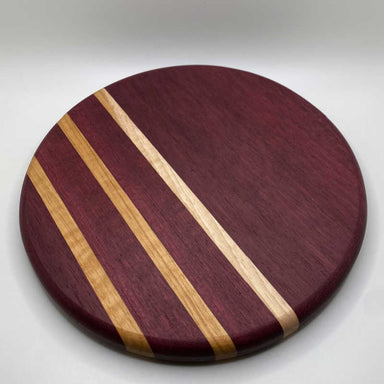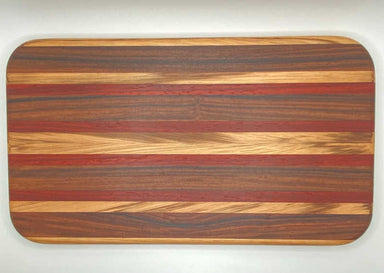
Off-Trayals | Handmade Cutting Board | Brazilian Teak
Measuring 8x12" these Brazilian Teak Cutting boards are outstanding quality! Easily packable and incredibly useful, these cutting boards will provi...
View full detailsCutting boards are essential tools for any kitchen, including your outdoor cooking setup. They provide a safe and sanitary surface for preparing food, protecting your knives and ensuring clean cuts. When selecting cutting boards for camping or outdoor cooking, there are several factors to consider, such as material, size, weight, and portability.
Regular Cleaning:
Separate Boards for Different Foods:
Proper Storage:
Knife Maintenance:
Periodic Maintenance for Wood/Bamboo Boards:
Inspection:
Choosing the right cutting board for your outdoor cooking needs involves considering the material, size, weight, and ease of maintenance.
By selecting a board that fits your requirements and taking proper care of it, you can enhance your cooking experience and ensure food safety while enjoying your outdoor adventures.
Whether you opt for a lightweight plastic board, a foldable option, or a durable wooden board, having the right cutting surface is crucial for any camping kitchen setup.
 Save Liquid error (snippets/product-badge line 32): Computation results in '-Infinity'%
Save Liquid error (snippets/product-badge line 32): Computation results in '-Infinity'%
Measuring 8x12" these Brazilian Teak Cutting boards are outstanding quality! Easily packable and incredibly useful, these cutting boards will provi...
View full details Save Liquid error (snippets/product-badge line 32): Computation results in '-Infinity'%
Save Liquid error (snippets/product-badge line 32): Computation results in '-Infinity'%
Well folks, The Hard Working Americans over at Off-Trayals have done it again! These incredibly small batch cutting boards are unique and truly on...
View full details Save Liquid error (snippets/product-badge line 32): Computation results in '-Infinity'%
Save Liquid error (snippets/product-badge line 32): Computation results in '-Infinity'%
Well folks, The Hard Working Americans over at Off-Trayals have done it again with another quality cutting board. Leather to woodworking, our blue...
View full details Save Liquid error (snippets/product-badge line 32): Computation results in '-Infinity'%
Save Liquid error (snippets/product-badge line 32): Computation results in '-Infinity'%
Well folks, The Hard Working Americans over at Off-Trayals have done it again! Expertly crafting these beautiful handmade cutting boards ensurin...
View full details
